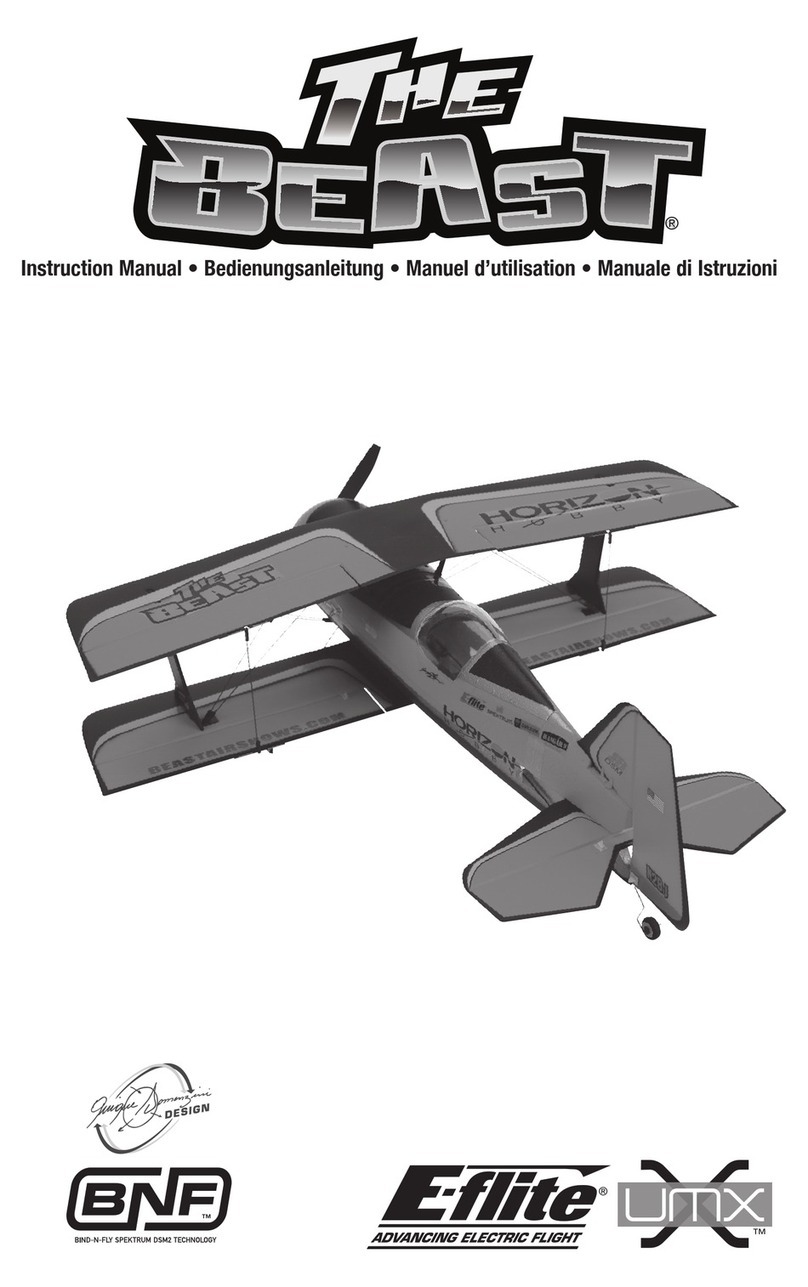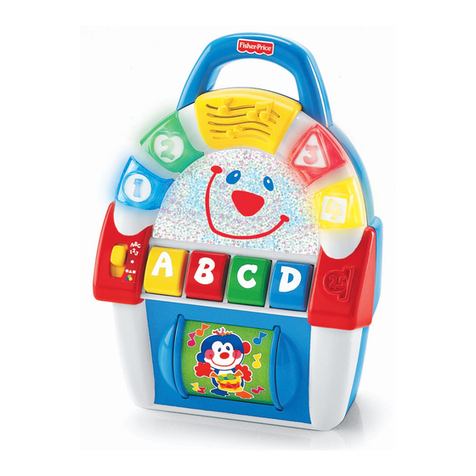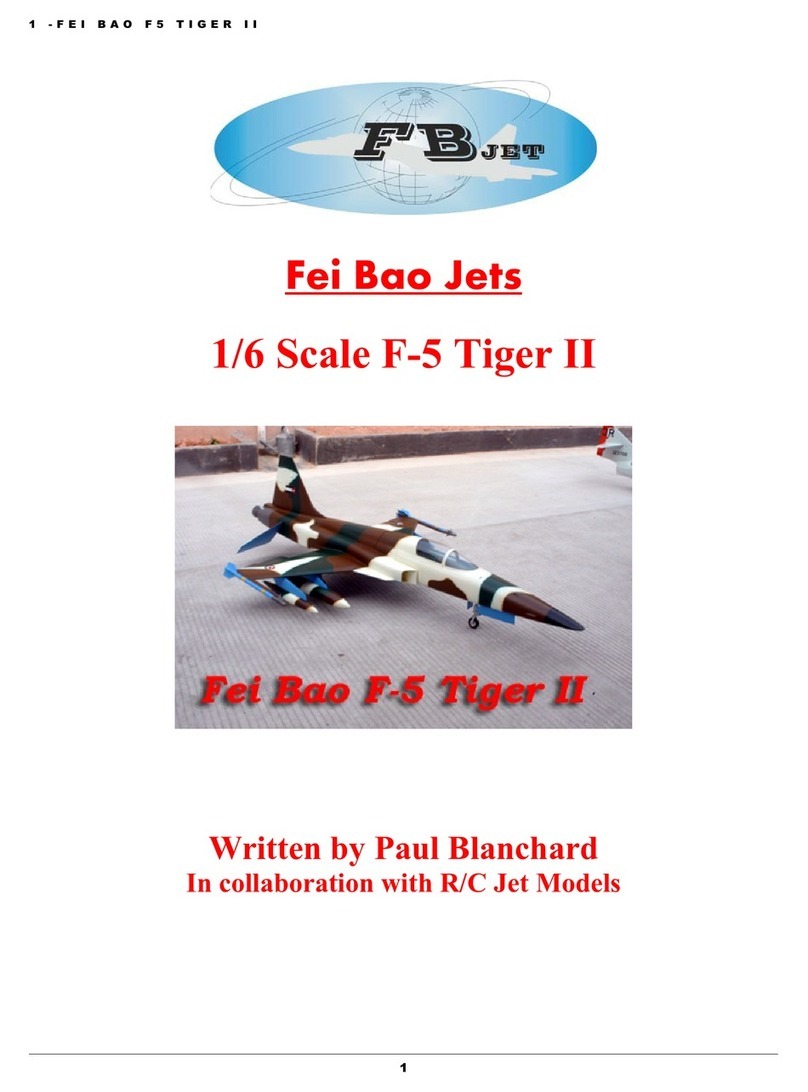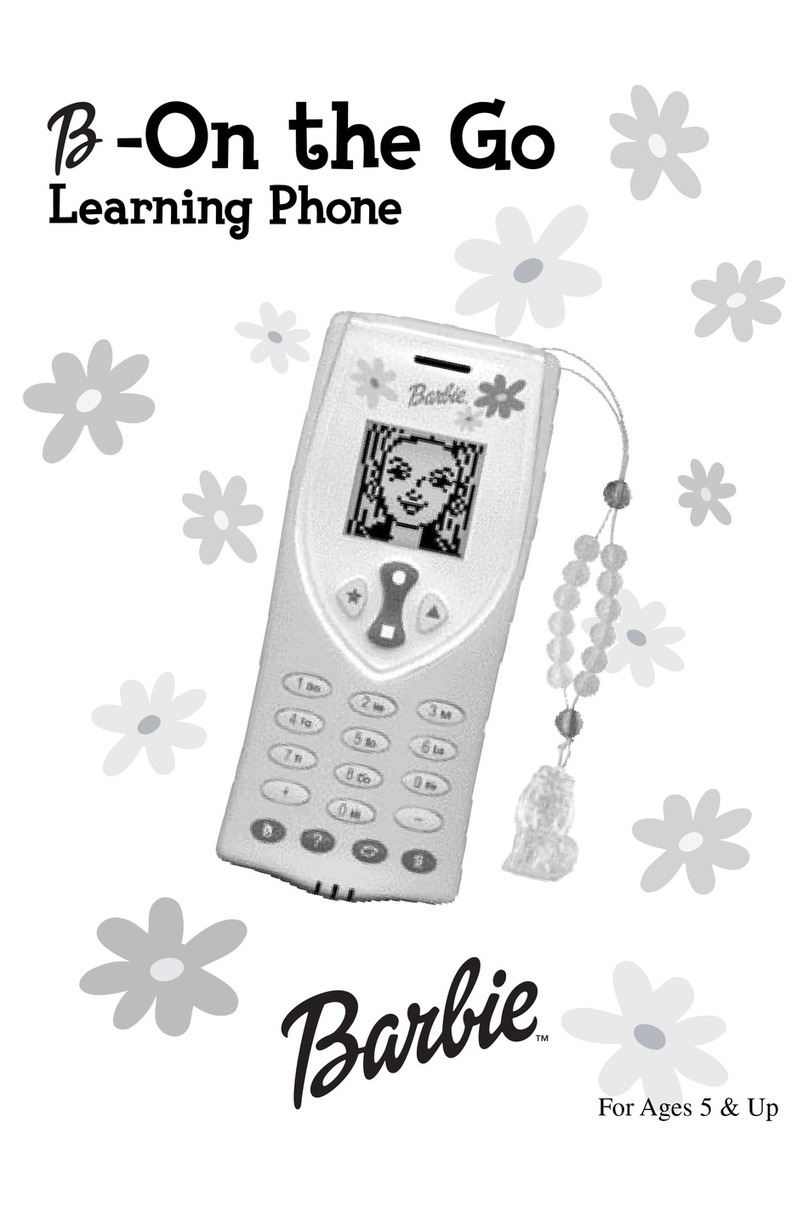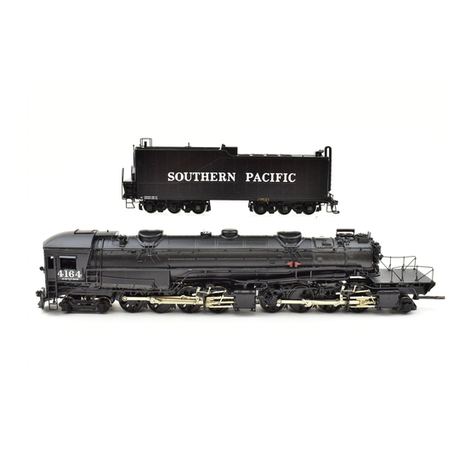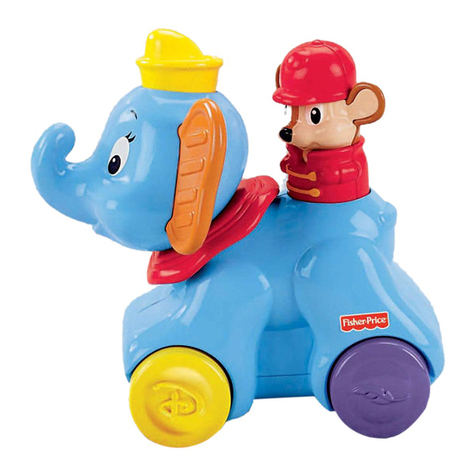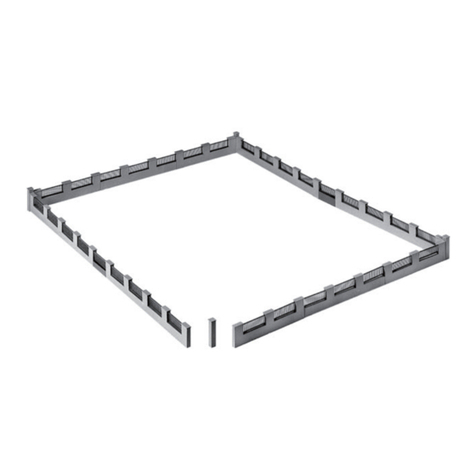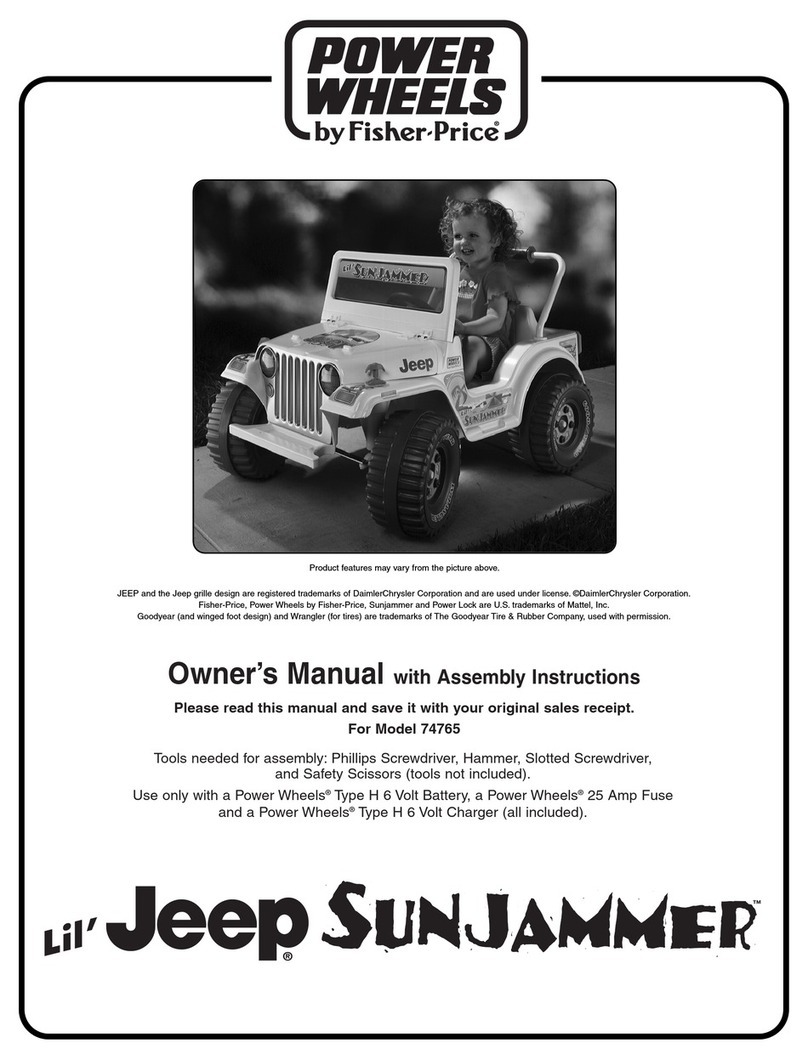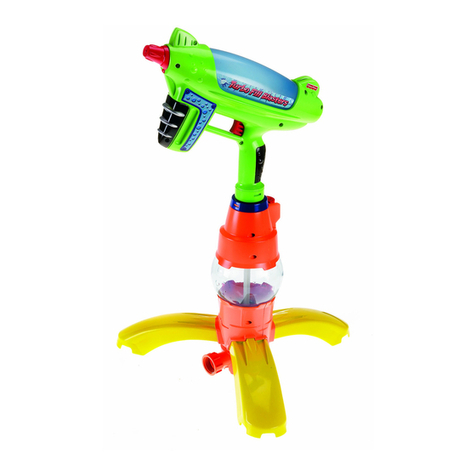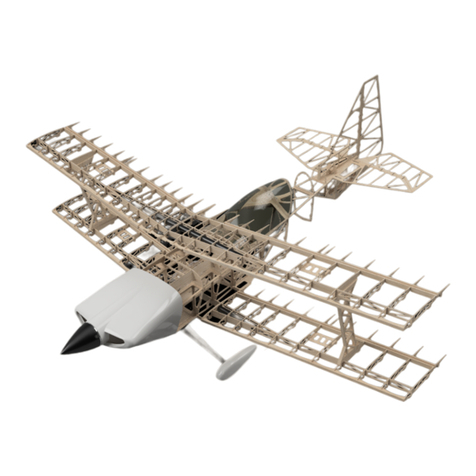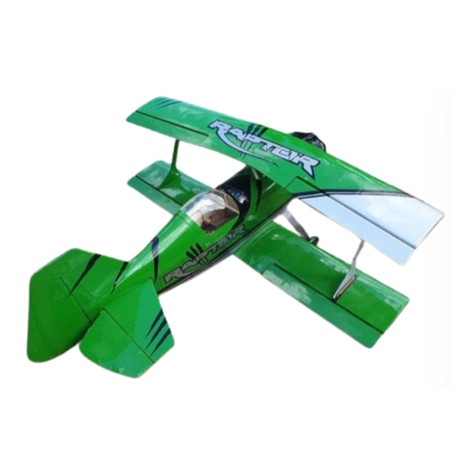
Thank you for purchasing the Skip Model Designs 1300mm Slick 540
If you have any issues, questions, concerns or problems during assembly, please contact us :
We As skip model designs, Assume the builder to be competent in been able to build and set up model aircraft. If
this is your rst model aircraft. We advise you seek advice before beginning the slick.
SAFETY in Assembly
During assembly of this aircraft, you will be asked to use sharp knives and hobby adhesives. Please follow all safety procedures recommended by the
manufacturers of the products you use,and always follow these important guidelines:
• ALWAYS protect your eyes when working with adhesives, knives, or tools, especially power tools. Safety glasses are the best way to protect your
eyes.
• ALWAYS protect your body, especially your hands and ngers when using adhesives, knives, or tools, especially power tools. Do not cut toward
exposed skin with hobby knives. Do not place hobby knives on tables or benches where they can roll o or be knocked o.
• ALWAYS have a rst-aid kit handy when working with adhesives, knives, or tools, especially power tools. ALWAYS keep hobby equipment and
supplies out of the reach of children.
• SAFETY in Flying! This is NOT a toy! It is a very high-performance RC airplane capable of high speeds and extreme manoeuvres. It should only be
operated by a competent pilot in a safe area with proper supervision.
• ONLY y your aircraft in a safe, open area, away from spectators and vehicles and where it is legal to y. NEVER y over an unsafe area, such as a
road or street.
• NEVER y near overhead power or utility lines. If your airplane ever becomes stuck in a line or a tree DO NOT attempt to retrieve it yourself. Contact
the authorities for assistance in retrieving your aircraft. Power lines are DANGEROUS and falls from ladders and trees CAN KILL!
• Never y too close to yourself or spectators.
• Spinning propellers are DANGEROUS! Never run your motor inside a house or building with the propeller attached Remove the prop for safety. • • •
Always y within your control.
• Always follow manufacturers instructions for your radio system.
•Always preform a pre-ight check of your aircraft to be certain of the aircraft’s airworthiness.
•Always obtain proper insurance before ying. Always y model aircraft in accordance with the Academy of Model Aeronautics (AMA) Safety Code and
BMFA/ LMA. Please visit These websites easily found in major search engines.
Limits of Responsibility
Skip Model Designs provides high-quality aircraft and components to it’s customers and end users. These aircraft and components are assembled by
the end user to produce a ying model. It is beyond skip model design’s to monitor the end user’s completed aircraft. Therefore, Skip Model Designs
in no way accepts or assumes responsibility or liability for damages resulting from the end user assembled product. The end user assumes all
responsibility and liability in use of Skip Model Designs and components
Required Items
• Masking or painters tape
• Hobby knife with #11 blades.
• Fresh 30 minute & 15 Minute epoxy.
• Plenty of both Medium and Thin CA.. Activator can also be used.
• Electric drill with an assortment of small drill bits.
• Small at head and Phillips head screw drivers.
• Standard and needle nose pliers.
• Hammer, Hacksaw and other basic Hobbiest Tools
• Metric ball driver or allen key set.
• Sanding block and sandpaper. Hobby Plane
• 4 x Savox 0256 Servos
• 1 x Overlander 3548/05 Brushless outrunner
1 x 60 Amp Speed Controller
1 x 3s or 4s 2200mah Lipo
Make sure that the plane is secured properly when you start up the engine.
Have at least 2 helpers hold your plane from the tail end or from behind the
wing tips before you start theengine. Make sure that all spectators are behind,
or far in front, of the aircraft when running up the engine.
Make sure that you range check your R/C system thoroughly before the rst
ight. It is absolutely necessary to range check your complete R/C installation
rst WITHOUT the engine running. Leave the transmitter antenna retracted,
and check the distance you can walk before ‘fail-safe’ occurs. Then start up
the engine, run it at about half throttle and repeat this range check with the
engine running.
Make sure that there is no range reduction before ‘fail-safe’
occurs. Only then make the 1st ight. If you feel that the range with engine
running is less then with the engine o, please contact the radio supplier and
the engine manufacturer and DON’T FLY at that time.
Check for vibrations through the whole throttle range. The engine should run
smoothly with no unusual vibration. If you think that there are any excessive
vibrations at any engine rpm’s, DON’T FLY at this time and check your engine,
spinner and propeller for proper balancing. Due to the models construction
( Been Light) it is very important to have everything running smoothly.




















